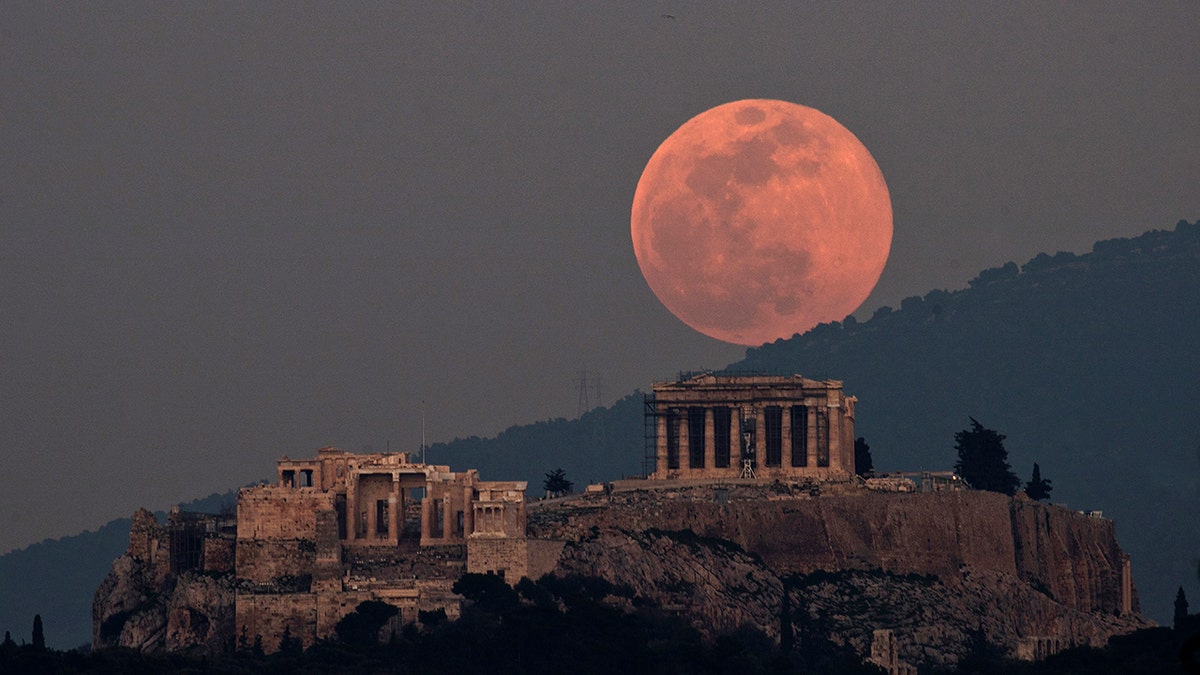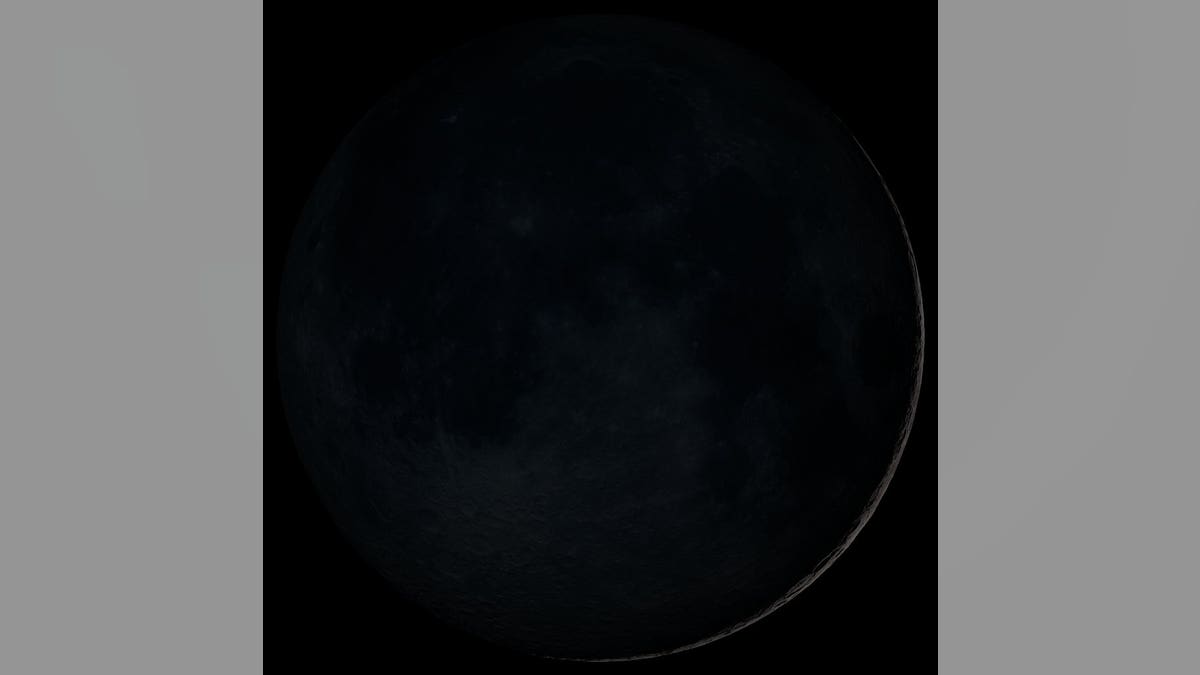What is a new moon?
What is the modern definition of a new moon? This video explains why this happens and how often.
The new moon is the first lunar phase, which leaves Earth’s natural satellite in shadow.
The modern definition of the new moon occurs “when the Moon and Sun are at the same geocentric ecliptic longitude,” explains NASA’s Scientific Visualization Studio on its website. “The part of the Moon facing us is completely in shadow then."
“There’s a new moon about once a month, because the moon takes about a month to orbit Earth,” explains EarthSky. “Most of the time, the new moon passes not in front of the sun, but simply near it in our sky. That’s why, in most months, there’s no solar eclipse.”
NEW MOON ON DECK: WHAT YOU NEED TO KNOW
Typically, new moons can’t be seen, says EarthSky, which notes that they usually make their way across the sky during the day. For a solar eclipse to occur, the moon must be at its new phase, according to EarthSky.

The moon rises over the Parthenon on the ancient Acropolis Hill in Athens, Greece, Tuesday, Feb. 19, 2019. The full moon, or supermoon, appears brighter and bigger than other full moons because it is close to its perigee, which is the closest point in its orbit to Earth. (AP Photo/Petros Giannakouris)
A solar eclipse occurs when the moon passes between the Earth and the sun and scores a bull's-eye by completely blotting out the sunlight. Many Americans fondly remember the solar eclipse of 2017, which captivated millions of people across the country.
The coast-to-coast eclipse on Aug. 21 of that year carved a 70-mile wide path of totality from the Pacific coast to the Atlantic, with hordes of people donning solar eclipse glasses to experience the unusual event. The eclipse, which began in Oregon and ended in South Carolina, was the first to cross the continental U.S. since 1918.
SNOW MOON STUNS AS ONE OF THE LARGEST FULL MOONS OF 2020 LIGHTS UP THE SKY
Families from all over the country flocked to cities in the line of totality, such as Charleston and Nashville, which hosted over 1 million visitors.

The traditional new moon in an image posted by NASA's Scientific Visualization Studio. (Ernie Wright/David Ladd (USRA)/Noah Petro/John Keller(NASA/GSFC). NASA Scientific Visualization Studio)
The next total solar eclipse in the U.S. will be in 2024 and the next coast-to-coast one won't be until 2045.
The new moon is an important part of many cultures.
EPIC NASA PHOTOGRAPH SHOWS INTERNATIONAL SPACE STATION CROSSING THE MOON
“About a day after the New Moon conjunction, the Moon becomes visible again as a Waxing Crescent Moon,” explains timeanddate.com. “The initial period, as only the thinnest sliver of a Crescent Moon becomes visible, used to be called New Moon while the darkest phase was called Dark Moon.”
“This traditional definition of New Moon is still in use in some cultures, defining the beginning of the months in the Islamic calendar,” it adds.
CLICK HERE TO GET THE FOX NEWS APP
NASA also notes that the traditional new moon is “the earliest visible waxing crescent, which signals the start of a new month in many lunar and lunisolar calendars.”
The Associated Press contributed to this article.
Follow James Rogers on Twitter @jamesjrogers




















